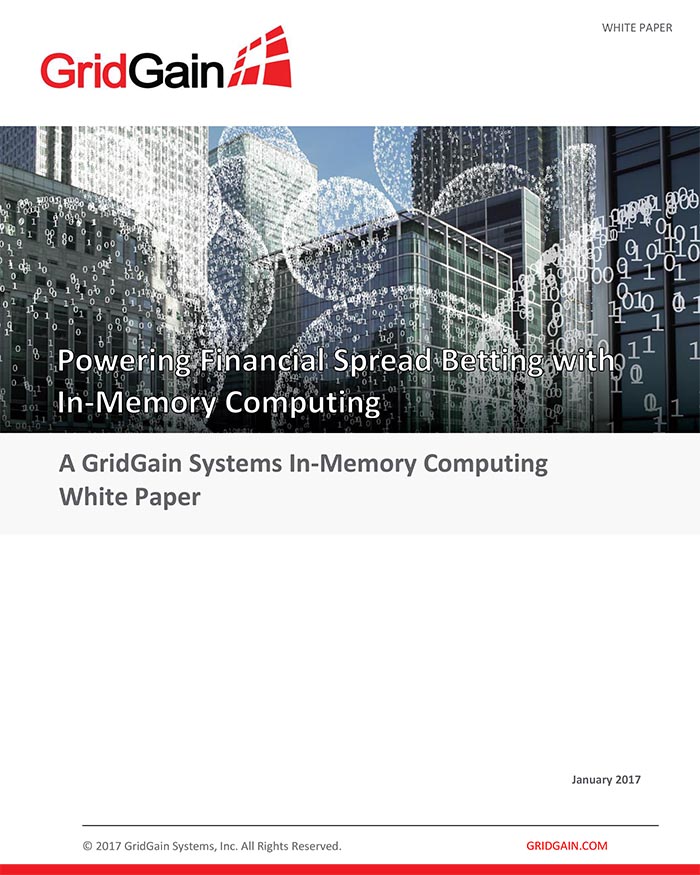Powering Financial Spread Betting with In-Memory Computing
Spread betting offers some compelling advantages, including low entry and transaction costs, preferential tax treatment, and a diverse array of products and options. Traders can bet on any type of event for which there is a measurable outcome that might go in either of two directions – for example, housing prices, the value of a stock-market index, or the difference in the scores of two teams in a sporting event. Spread betting can be conducted through brokerages, asset managers, online gambling firms, and any other player who is willing to provide a spread, or range of outcomes, upon which traders can bet that the measured value will rise or fall. The upfront cost to place a bet is minimal and rewards can be substantial.
However, spread betting is also a high-volatility, minimally regulated market with significant risks. To limit these risks – and increase the rewards – financial institutions involved in spread betting are using advanced mathematical models to analyze large amounts of data, predict outcomes, and devise optimal strategies. These computationally intense actions must be performed at very high speeds to take advantage of current market conditions.
Fortunately, there are technologies today that provide the real-time speed needed for such strategies. This white paper will discuss the advantages and risks of spread betting, the technologies being used for it, and the reasons why in-memory computing is becoming the technology of choice for those who want to succeed at spread betting.
